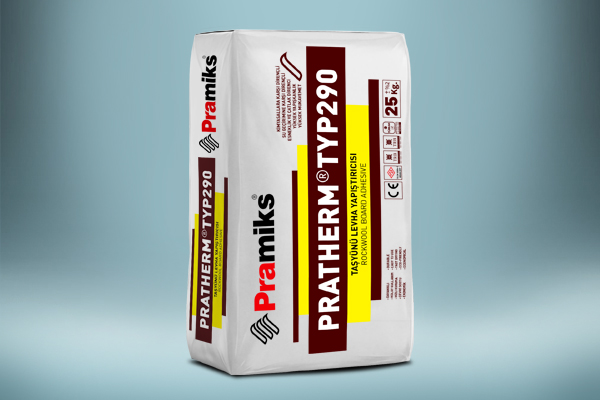Belgelerimiz

PRODUCTS
PRATECH® TYP290
Rockwool Board Adhesive
A cement-based, high-adhesion, modified polymer reinforced, single-component ready adhesive mortar with a specially toothed texture, used for bonding rock wool boards to mineral-based surfaces such as concrete, plaster, brick, and aerated concrete.
- Strong adhesion performance with a high and homogeneous polymer content.
- Possesses high elasticity properties.
- Long-term durability against outdoor weather conditions.
- Provides extra workability and ease of application on the surface.
Details
Details
Technical Specifications
|
|
|
|---|---|
| Dry Unit Weight | ≥ 1000 kg/m³ |
| Compressive Strength | ≥ 6 N/mm² |
| Flexural Strength | ≥ 2 N/mm² |
| Bond Strength to Substrate | ≥ 0,5 N/mm² |
| Bond Strength to Insulation Board | ≥ 0,08 N/mm² |
| Water Absorption, After 30 min (gr) | ≤ 5 |
| Water Absorption, After 240 min (gr) | ≤ 10 |
| Reaction to Fire Class | A1 |
| Grain Size Over 1 mm | Max %1,0 |
| Consumption | The recommended consumption amount for m² application is 4.0 – 5.0 kg. This value may vary depending on surface and environmental conditions. |
| Packaging | 25 Kg. Kraft bag |